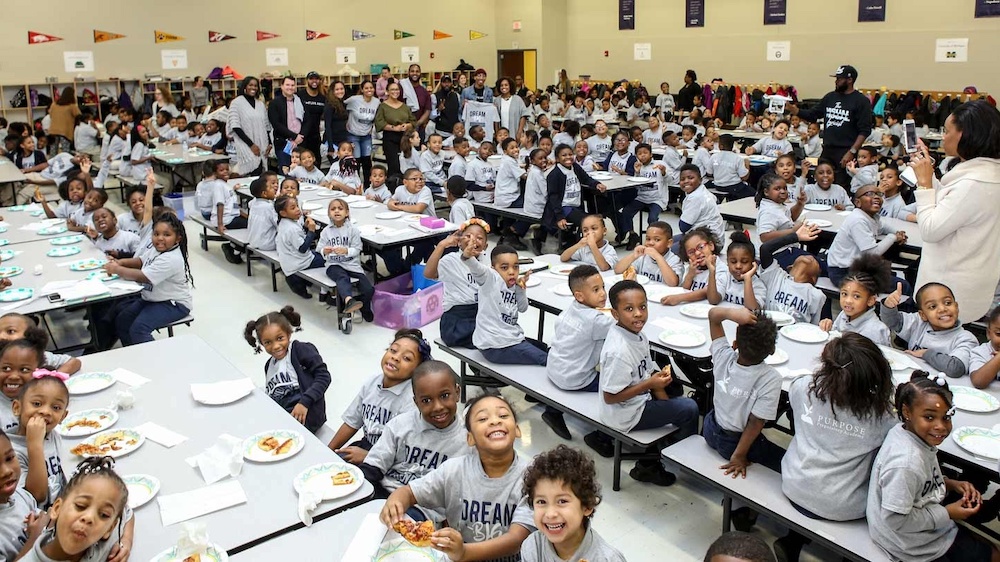If you’re interested in sharing your opinion on any cultural, political or personal topic, create an account here and check out our how-to post to learn more.
____
Every February, to recognize Black History Month, companies and organizations across America fill their social media channels and newsletters with images of Black historical figures like Martin Luther King Jr., Maya Angelou and Thurgood Marshall. Schools set aside time to discuss the civil rights movement and honor titans of history who changed the course of our country. It’s important to have a month dedicated to honoring our ancestors like Carter G. Woodson, the Father of Black History Month. But what message are we giving students if we’re cramming Black history into just one month — the shortest of the year — and ignoring it for the other 11?
If we do not ensure that Black History is learned within the continuum of American history, I believe we’re telling students that Black history is an alternate view of history — a minor part in the epic American play where white figures fill all the leading roles. As an educator, I’m working to change that.
Any informed historian can tell you that our history is full of notable Black men and women whose contributions were far from minor. In order to understand this fully, one must look beyond the most recognizable figures. Children should learn about people like Robert Smalls, who liberated himself during the Civil War and helped establish the country’s first free public education system; Daniel Hale Williams, who performed the first successful heart surgery; and Shirley Chisholm, who was the first Black woman to run for president and inspired countless women to get involved in government.
They should also know about the struggles that were overcome — about Plessy vs. Ferguson, which upheld the “separate but equal” doctrine; about the Dred Scott decision, which held that the rights and privileges in the Constitution were not extended to Black Americans; about the Little Rock Nine, who bravely walked into Central High School in 1957 after being denied entry to the all-white school by the governor, the National Guard and throngs of screaming white mobs.
That profound racial divide in our country still exists. That’s why the teaching of history must include the history of Black Americans, civil rights and liberation struggles that get us closer to the vision of a true democracy. For nearly 250 years, Black people built the buildings our forefathers lived in, grew the food they ate and nurtured their children — without choice. In other words, without Black people, there would be no America.
At Purpose Prep, the Nashville school I founded, we know that Black history is American history. History is past, present and future, and we draw connections between the events of the past and what’s happening in our world today. In November, our “Vote with Purpose” campaign inspired students to encourage their parents to vote. Our students celebrate local heroes like the late Kwame Lillard, Nashville’s civil rights leader and Freedom Rider who risked his life for the cause of racial justice. Our classrooms are named after Historically Black Colleges and Universities (HBCUs) so students are guided, every day, by examples of educational excellence and progress — and a glimpse of their own futures.
Our staff is actively acquiring deeper historical knowledge as well. We’re currently reading The New Jim Crow by Michelle Alexander and holding discussion groups about our country’s racial caste system. Many of our teachers were on the front lines of protests against systemic racism this summer after the police killing of George Floyd, and their first-hand experiences help students to understand that the struggles of our ancestors 400 years ago continue today. As a result, our students know that Black Americans were here from the beginning and built our country from the ground up while fighting the most unthinkable horrors and indignities.
Our student body is predominantly Black, so this curriculum has particular resonance. We know that it’s easier to be what you can see, so surrounding our students with images of Black excellence is foundational to our mission to produce students of intelligence and character who are equipped to change the world.
But I would argue that a curriculum rich in Black history should be just as foundational to the work of every school, including those that are majority white. As LaGarrett King, Director of the Carter Center for K-12 Black History Education at the University of Missouri, points out, a curriculum rich in Black history is one that doesn’t sanitize or present a monolithic view of Black narratives. Our national divide is deepening — and education must play a role in reversing that trend and leading us toward healing.
I applaud every school that devotes curriculum to Black history, and we must stand up against school districts that work to ban the teaching of Black history courses or courses on social justice. In our schools and society, it’s time that we call our country’s rich Black history what it is: A past that is inextricably woven into the fabric of the American history that we must all understand if we want our country to live up to its promise.
____
Lagra Newman is the Head of School at Purpose Preparatory Academy in Nashville, Tennessee.

